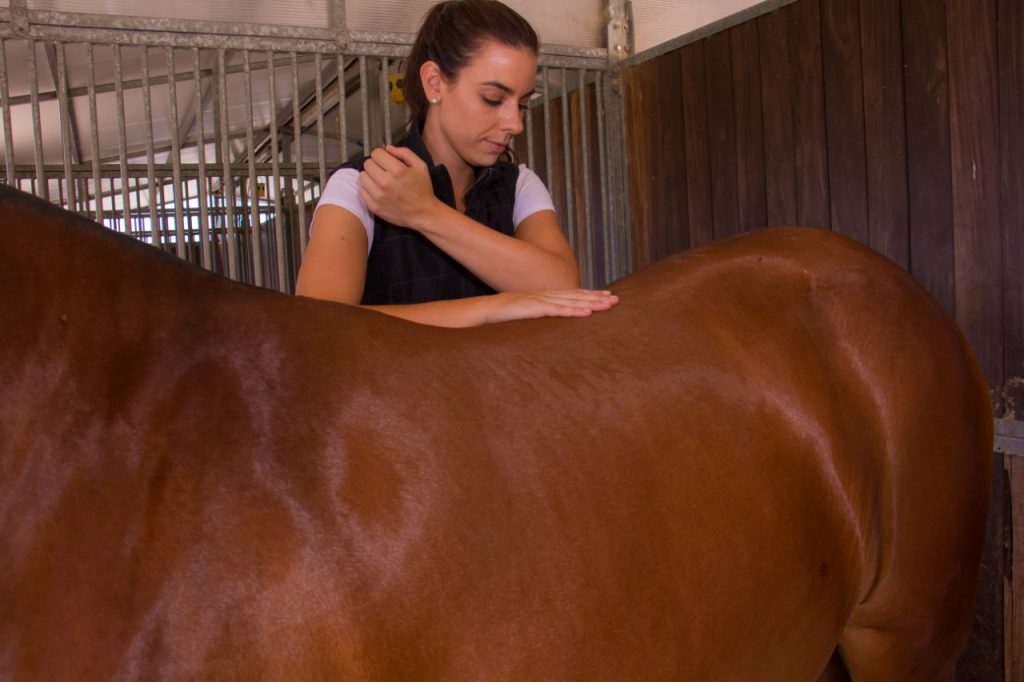Horses in freedom exercise naturally and have spontaneous movements, but when they are ridden and perform any equestrian discipline, large doses of training are required for the preparation of the binomial. Due to this athletic effort exerted by the horse, functional alterations may arise that lead to compensatory bio-mechanical alterations and possible injury chains.

Any musculoskeletal system, when an injury happens, the immediate reaction is the stabilization of the lesion through the reflex of muscle contraction and surrounding soft tissues. This process helps to prevent further damage, but in many cases once the primary injury has been resolved, the surrounding musculoskeletal system remains in reflex contraction and it is difficult for that tissue to regain its physiological length without external help. This secondary alteration causes muscular imbalances that will result with a modification of movement and flexibility, causing possible and eventual problems such as pain and / or lameness.
It is important to bear in mind that during the process of rehabilitation, horses may acquire antalgic postures which if prolonged over time can produce changes in their joint sensory receptors and induce a new incorrect body scheme. Once the primary alteration is resolved we must eliminate and re-establish the correct motor movement pattern. That is why during long periods of rest, the antigravity muscles that are always in operation may atrophy and lose their functionality, causing further injuries or injury chains. This process must be avoid with a correct motor control program before returning to training.
Equine Physio Performanceraises a new vision of globalized treatment, seeing the musculoskeletal injury of the horse as a whole and not only treating the affected area.
Thanks to Thomas W. Myers (i) who describes a system of muscle chains and lesion patterns, we are sure that any alteration can cause a distant repercussion of the altered point.
i Myers W. Anatomy Trains: Myofascial meridians for manual and movement therapists. Elsevier Health Sciences. 2009

